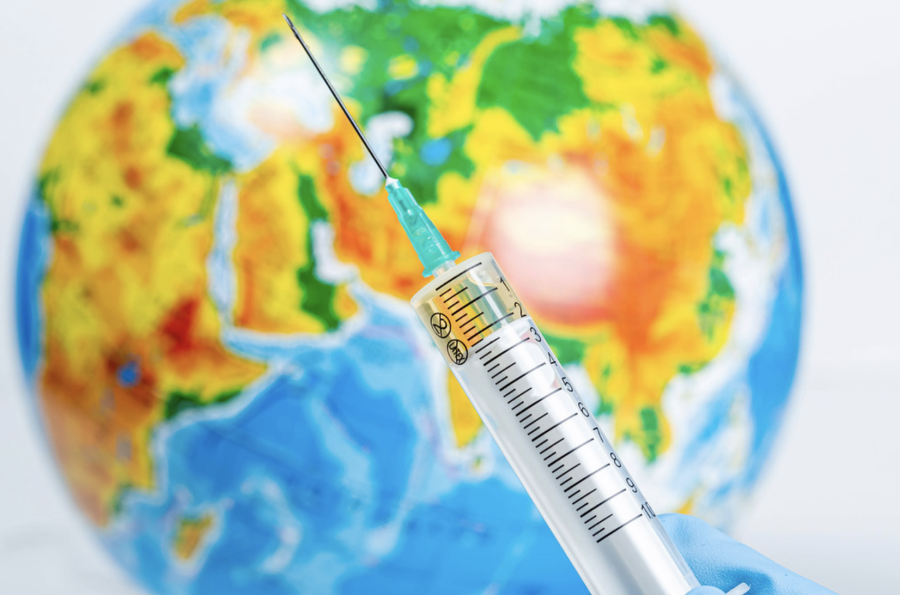Editor’s Note: On Friday, April 23, the CDC and FDA lifted their pause on the Johnson & Johnson coronavirus vaccine because they believe that the vaccine’s known and potential benefits outweigh its known and potential risks in individuals 18 years of age and older.
“Safety is our top priority. This pause was an example of our extensive safety monitoring working as they were designed to work—identifying even these small number of cases. We’ve lifted the pause based on the FDA and CDC’s review of all available data and in consultation with medical experts and based on recommendations from the CDC’s Advisory Committee on Immunization Practices,” said Dr. Janet Woodcock, the acting commissioner of the FDA.
The phrase “one and done,” oftentimes used to describe the Johnson & Johnson vaccine, just got more complicated.
On Tuesday morning, the Centers for Disease Control and Prevention and the U.S. Food and Drug Administration issued a joint statement calling for a pause on the administration of the Johnson & Johnson (Janssen) coronavirus vaccine. The call came after the two agencies reviewed data involving six reported U.S. cases of a rare and severe type of blood clot in individuals who received the vaccine.
As of April 12, “more than 6.8 million doses of the Johnson & Johnson vaccine have been administered in the U.S.,” meaning the known incidence rate is less than one per million. The severe type of blood clot is called cerebral venous sinus thrombosis and was seen in combination with low levels of blood platelets (thrombocytopenia), which are used in the body’s response to prevent bleeding.
According to Johns Hopkins, the current incidence rate of CVST before the administration of the vaccines is five per million, or five times the rate from the Johnson & Johnson vaccine.
“Right now, these adverse events appear to be extremely rare. COVID-19 vaccine safety is a top priority for the federal government, and we take all reports of health problems following COVID-19 vaccination very seriously,” the two agencies said.
All six cases occurred among women between the ages of 18 and 48, and symptoms occurred six to 13 days after vaccination with the Johnson & Johnson vaccine. According to the CDC, usually, a drug named heparin, an anticoagulant, is used as a “clot-buster.” However, in this case, the administration of heparin can be very dangerous.
On April 9, Johnson & Johnson reported four cases of blood clots in people who received its vaccine, one of which was in the clinical trials phase. The other three occurred during the vaccine rollout in the U.S., one of which was fatal.
“If they didn’t temporarily suspend use of the vaccine there’s a risk that additional cases of the rare clot will occur that could have been avoided. Also, healthcare providers would have lost some valuable days to learn how to properly treat these unique clots,” said Will Humble, executive director of the Arizona Public Health Association.
“If they were to not pause use of the vaccine pending the deep data dive and more cases occurred that could have been avoided or treated more effectively the public could lose confidence in the process to ensure that the [COVID-19] vaccines are safe,” Humble added.
Compared to the Pfizer and Moderna vaccines, which are mRNA vaccines, the Johnson & Johnson vaccine is an adenovirus-based vaccine. The Johnson & Johnson vaccine uses double-stranded DNA inside of an adenovirus with the goal of entering the cell’s nucleus to produce mRNA which codes for antibodies against the spike protein of the coronavirus.
According to trackers by the New York Times and the CDC, the seven-day average for vaccines is just over 3 million per day and about 36.4% of the total population has received at least one dose of the coronavirus vaccine and 22.3% of the total population is fully vaccinated.
RELATED: Pfizer says its coronavirus vaccine is 100% effective in children ages 12 to 15
In Arizona, Maricopa County issued a statement saying that they will pause the administration of the Johnson & Johnson vaccine. 35.2% of Arizona’s population has received at least one dose of the coronavirus vaccine and 22% of the population has been fully vaccinated.
“The primary goal is to understand all of the information available and to ensure that the health care provider community is aware of the potential for this rare adverse event and can recognize and manage this unique type of blood clot. It is important for the public to know that this rare blood clot has not been reported following receipt of the Pfizer or Moderna vaccines,” the county said.
The CDC is holding an Advisory Committee on Immunization Practices meeting tomorrow to review the six cases and assess their potential significance. The review will dive deeper into the details of the cases and examine how they are related to vaccine administration. The team will also look to see if the six individuals who had clots have something else in common, perhaps leading to another exclusion criteria for the vaccine.
Follow Amit Syal on Twitter









